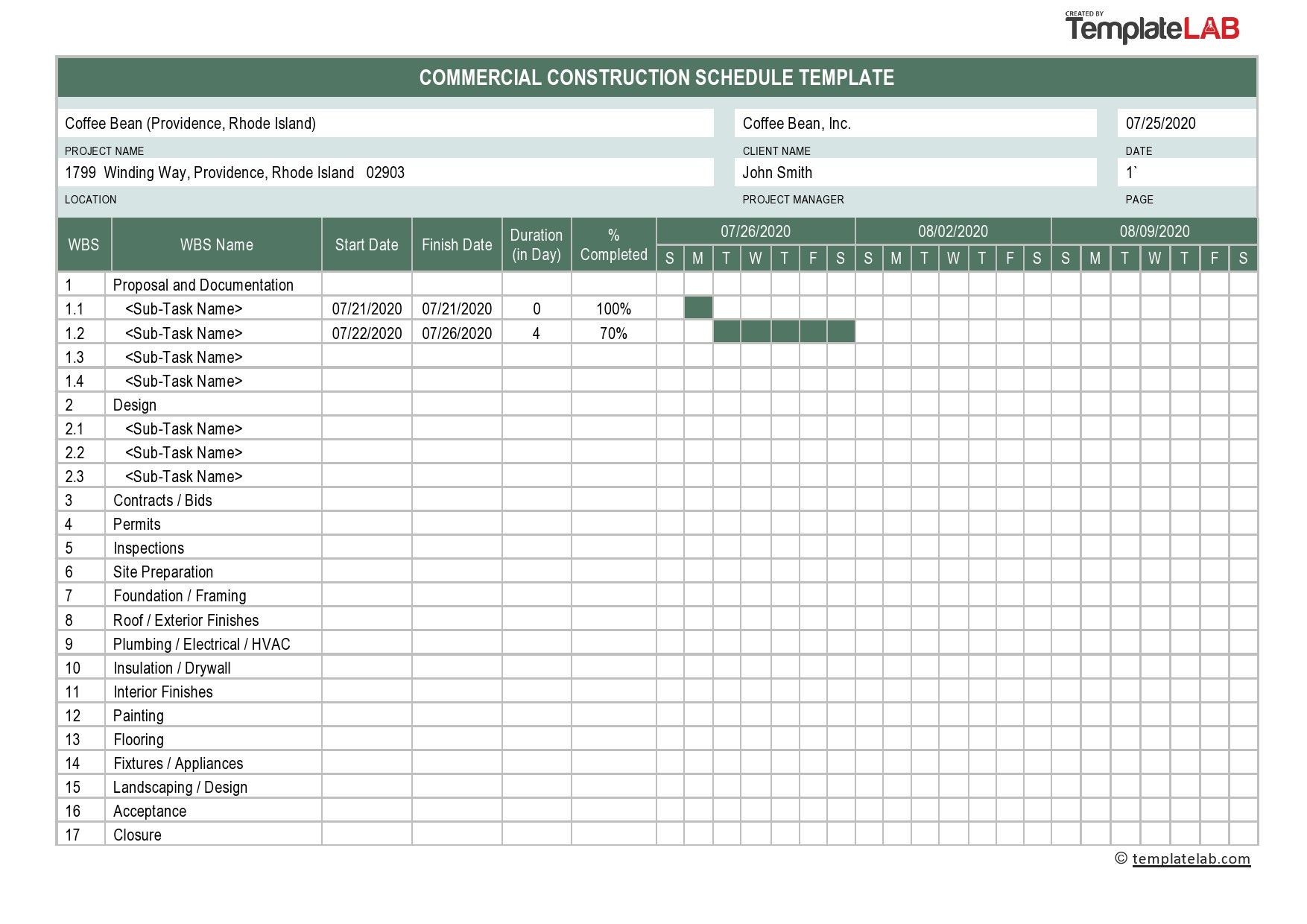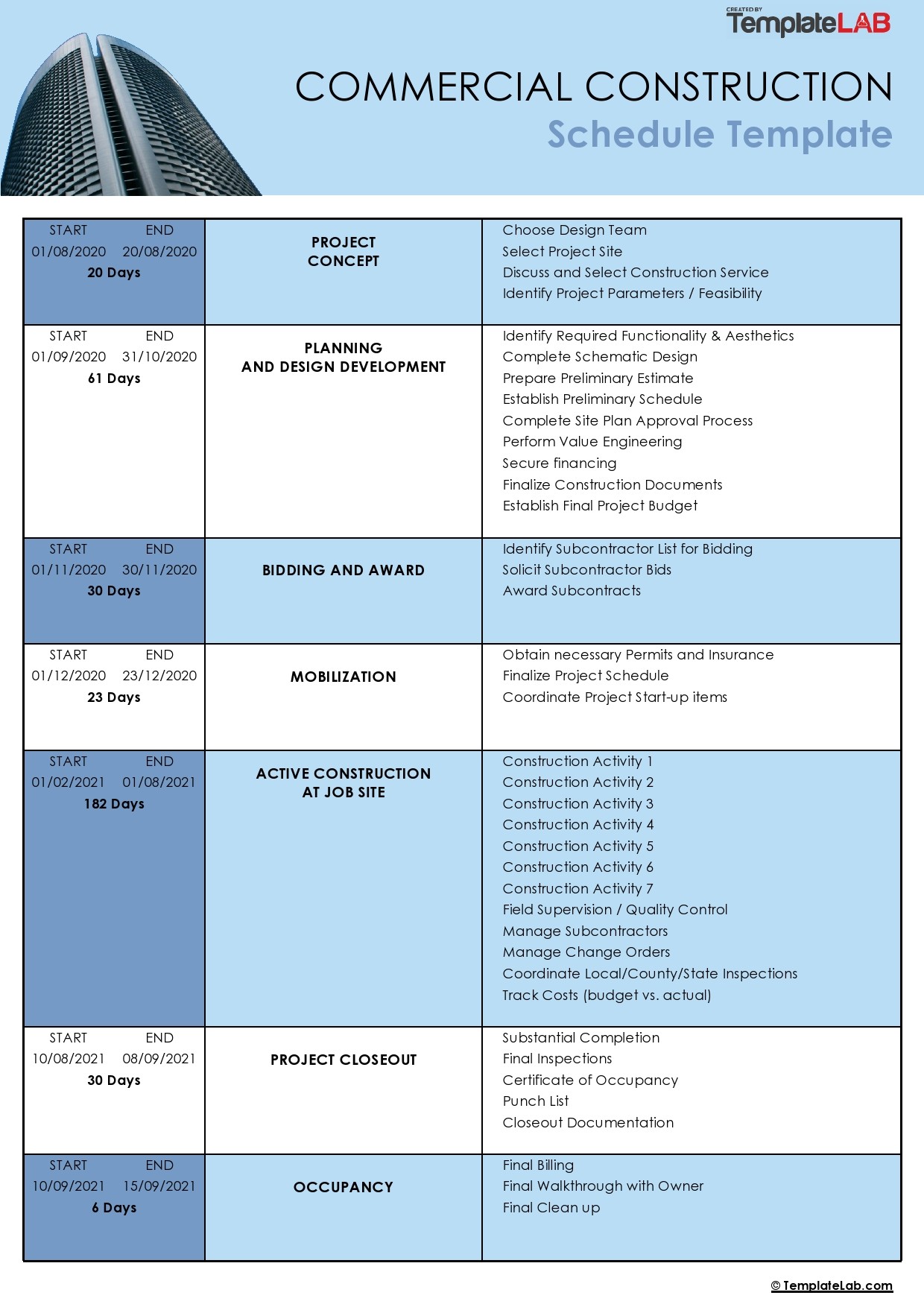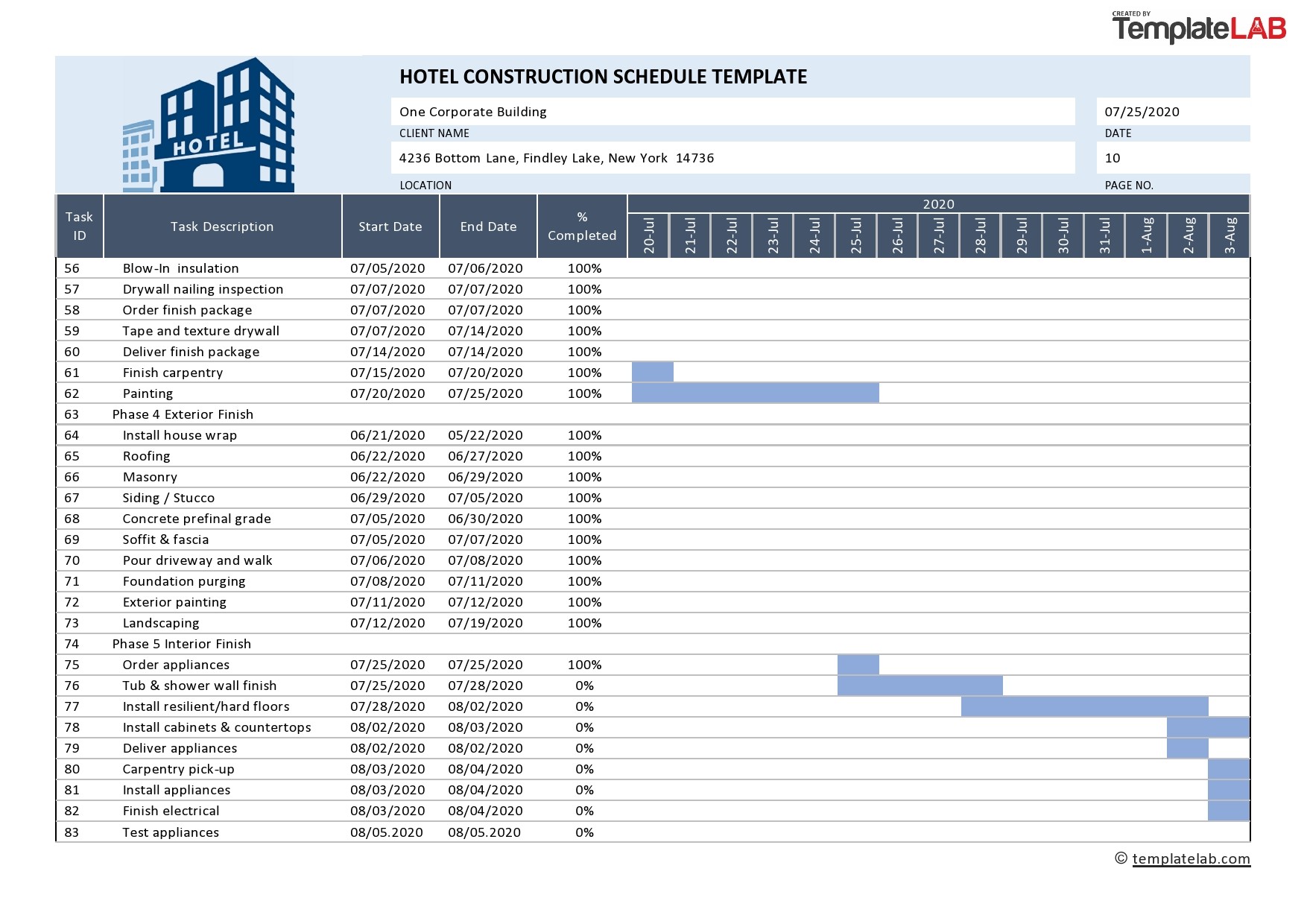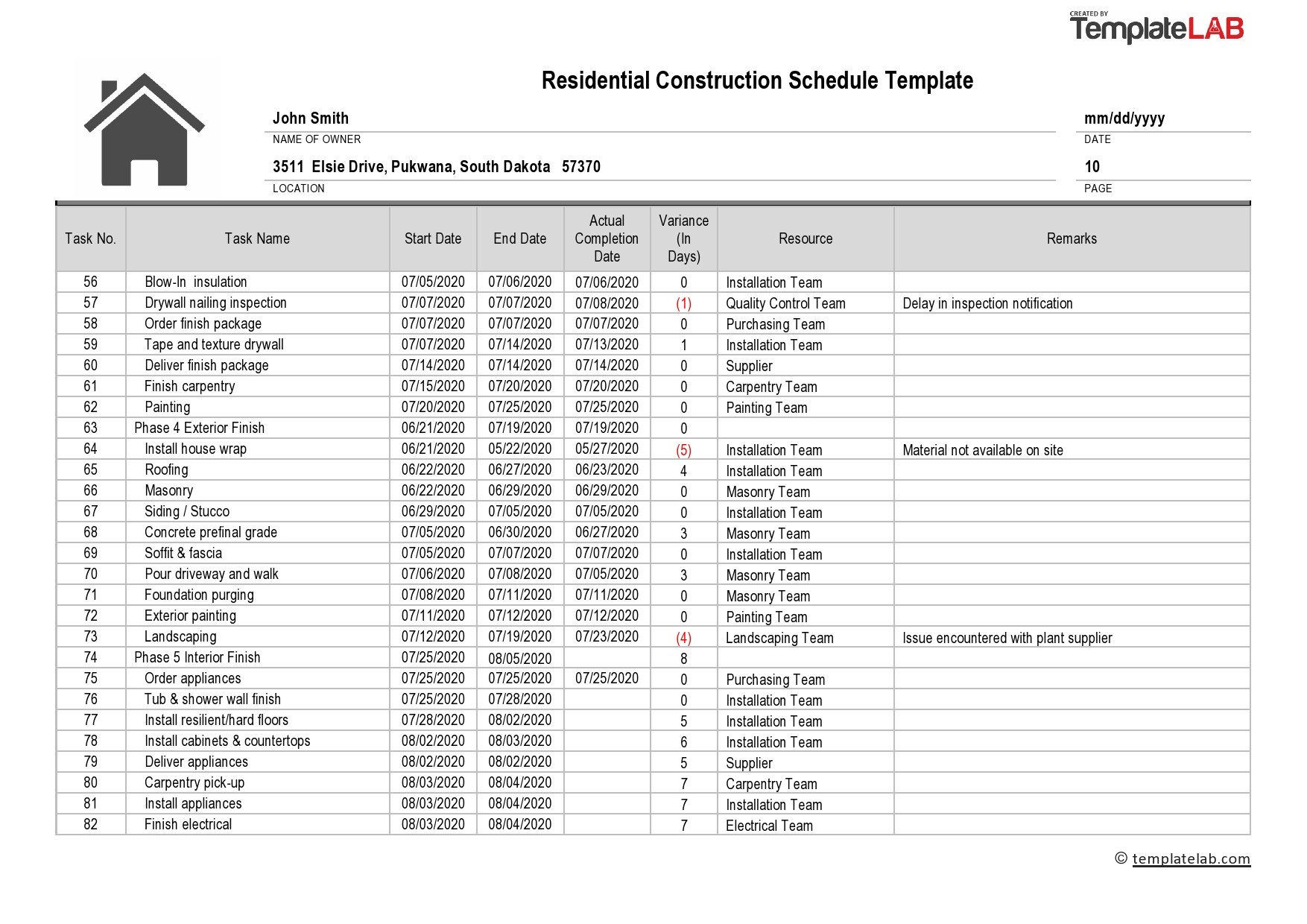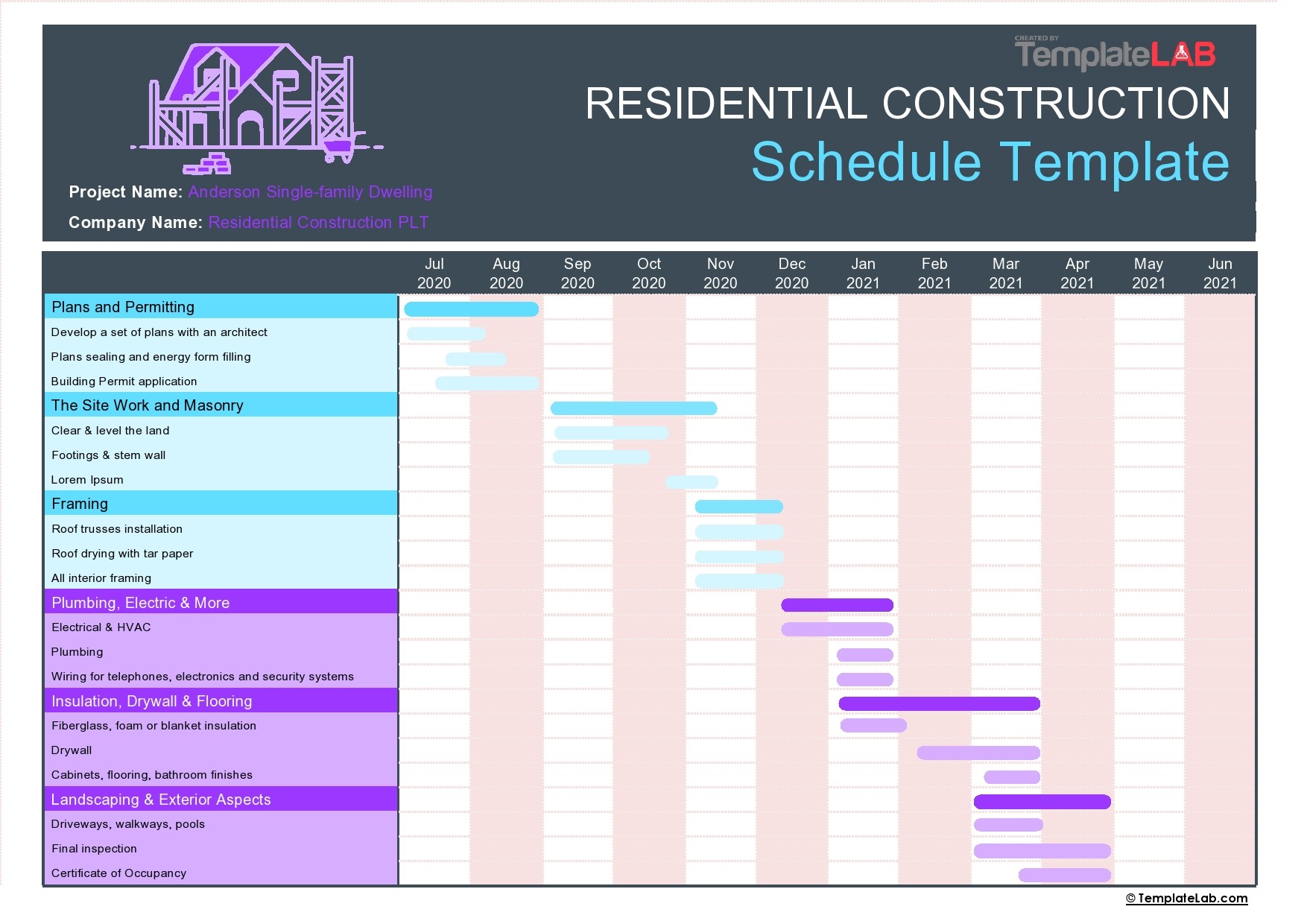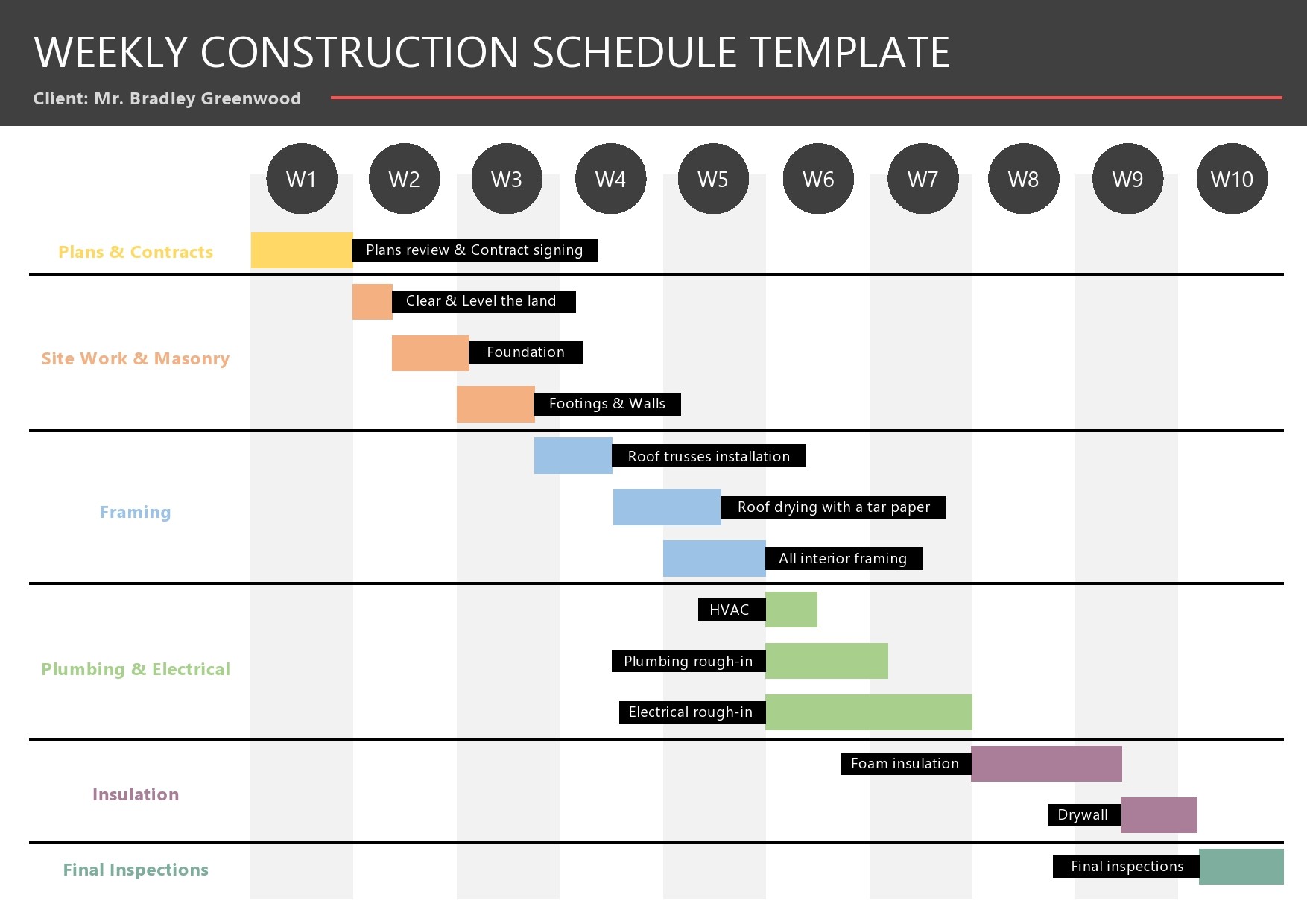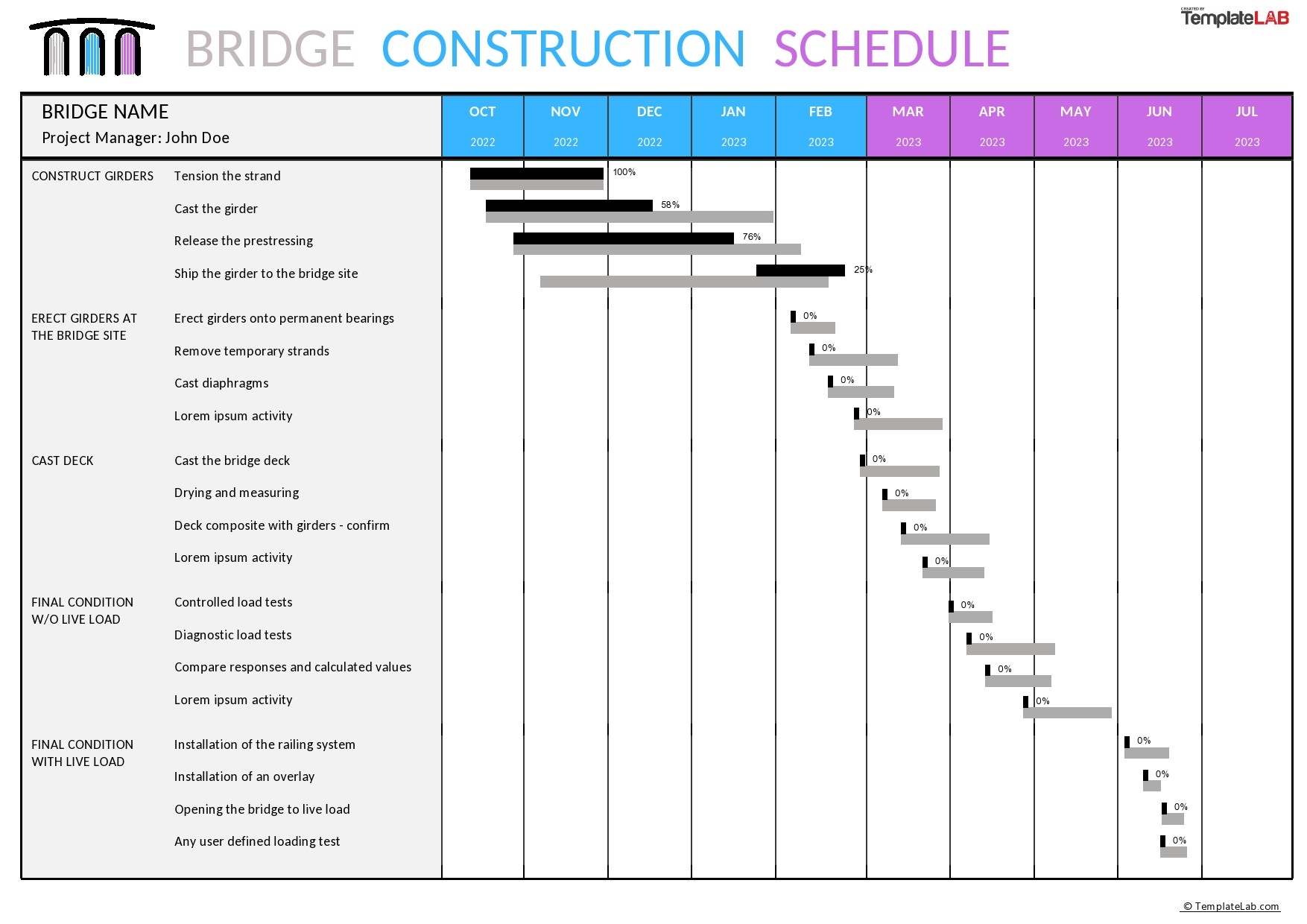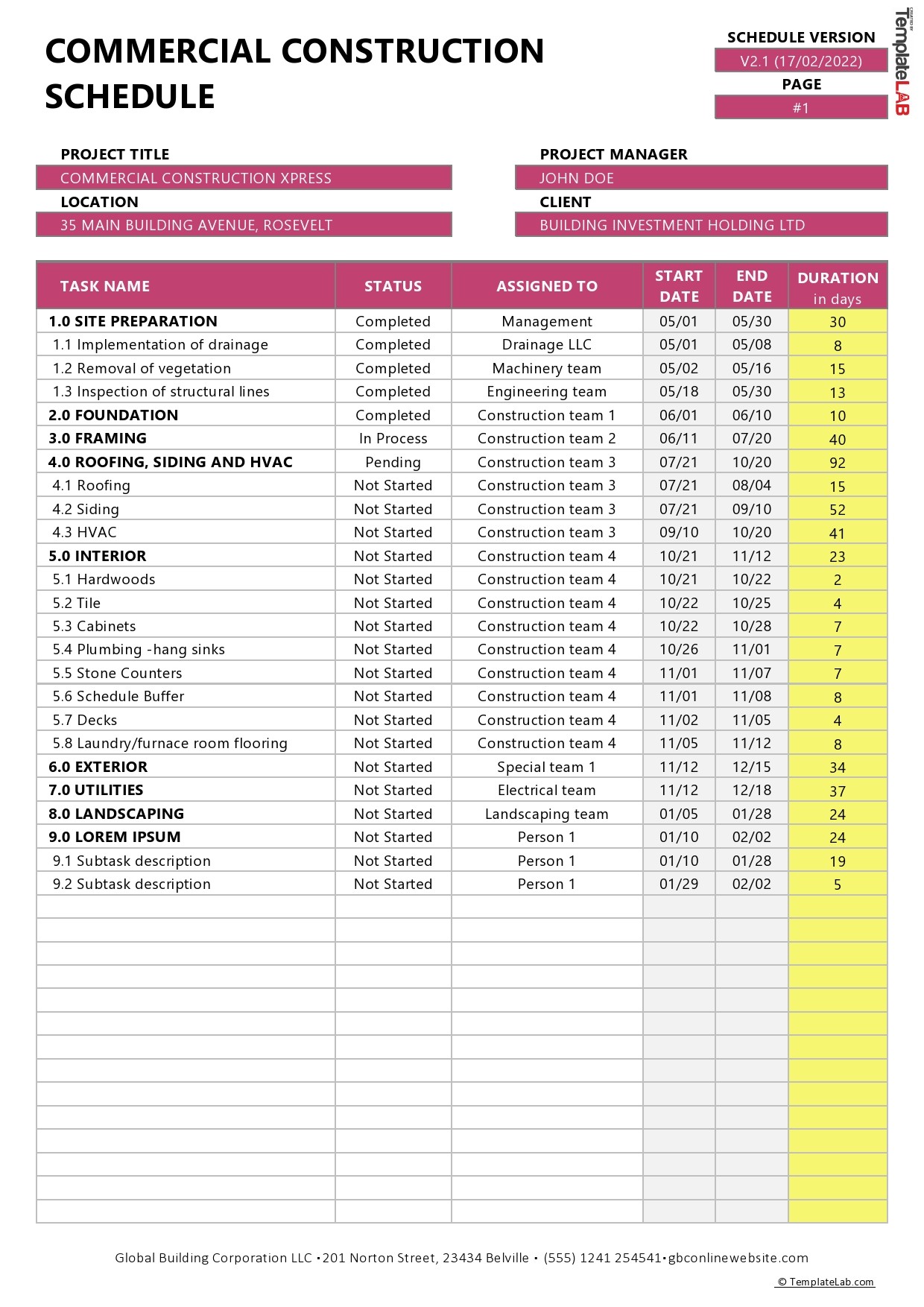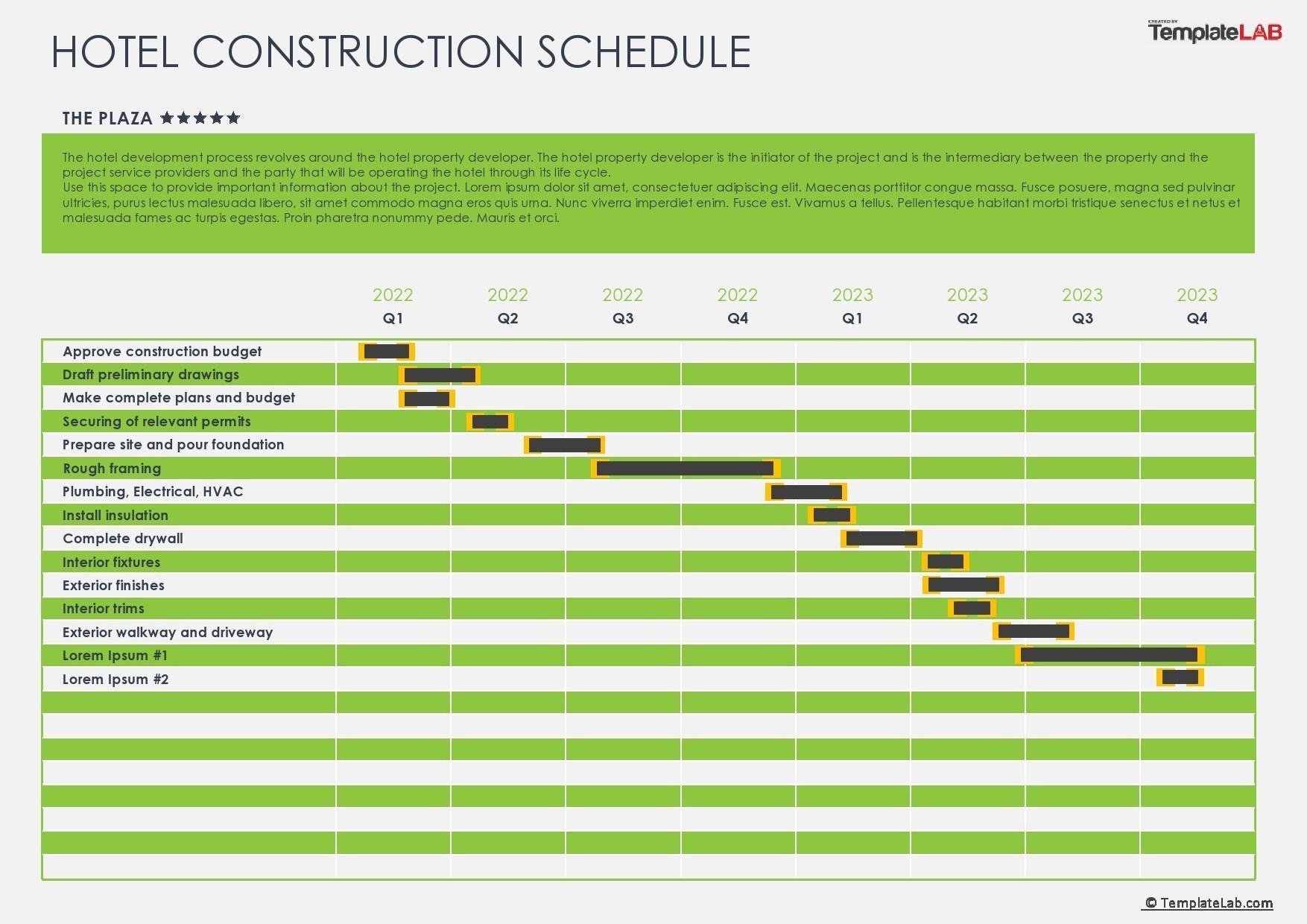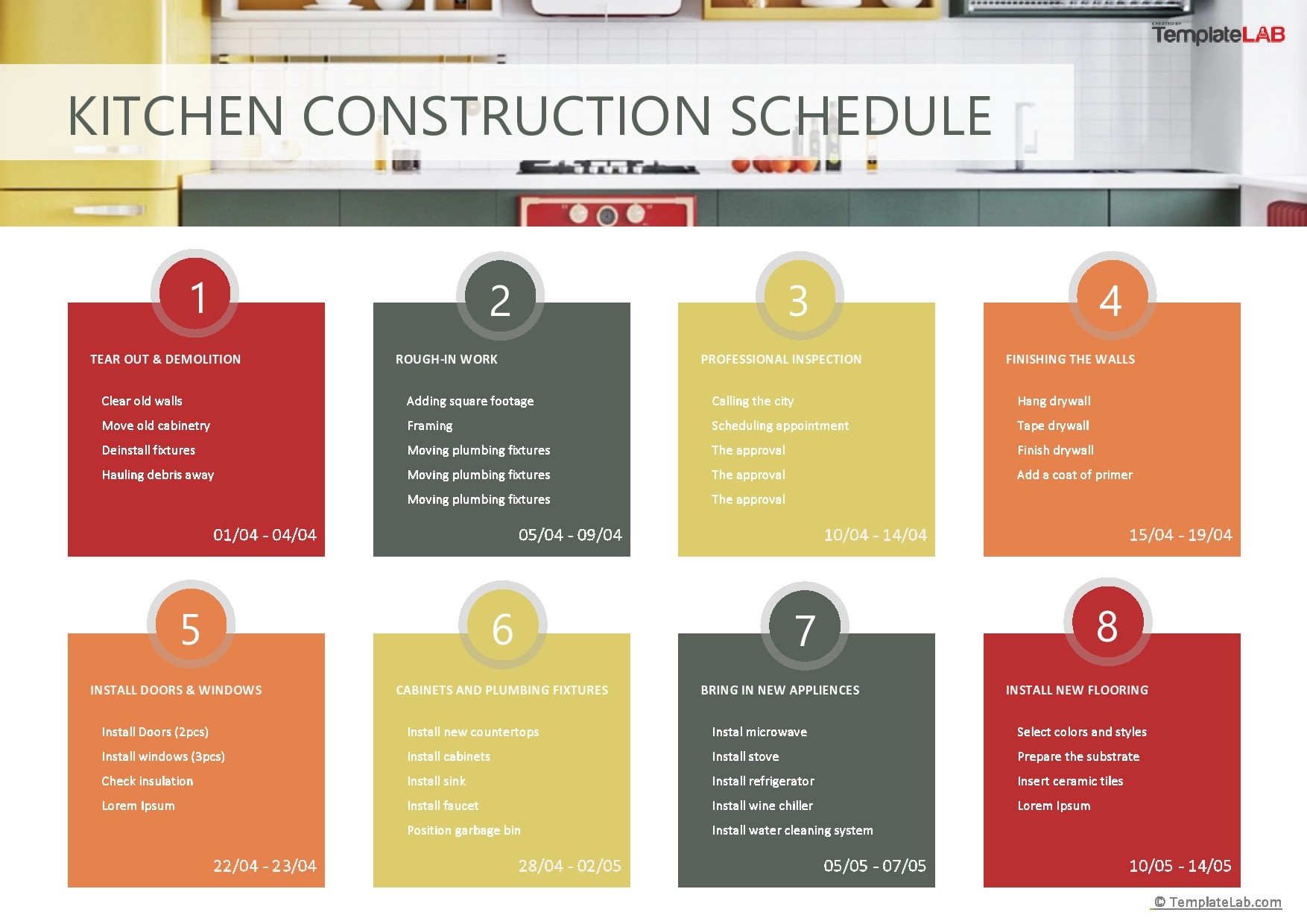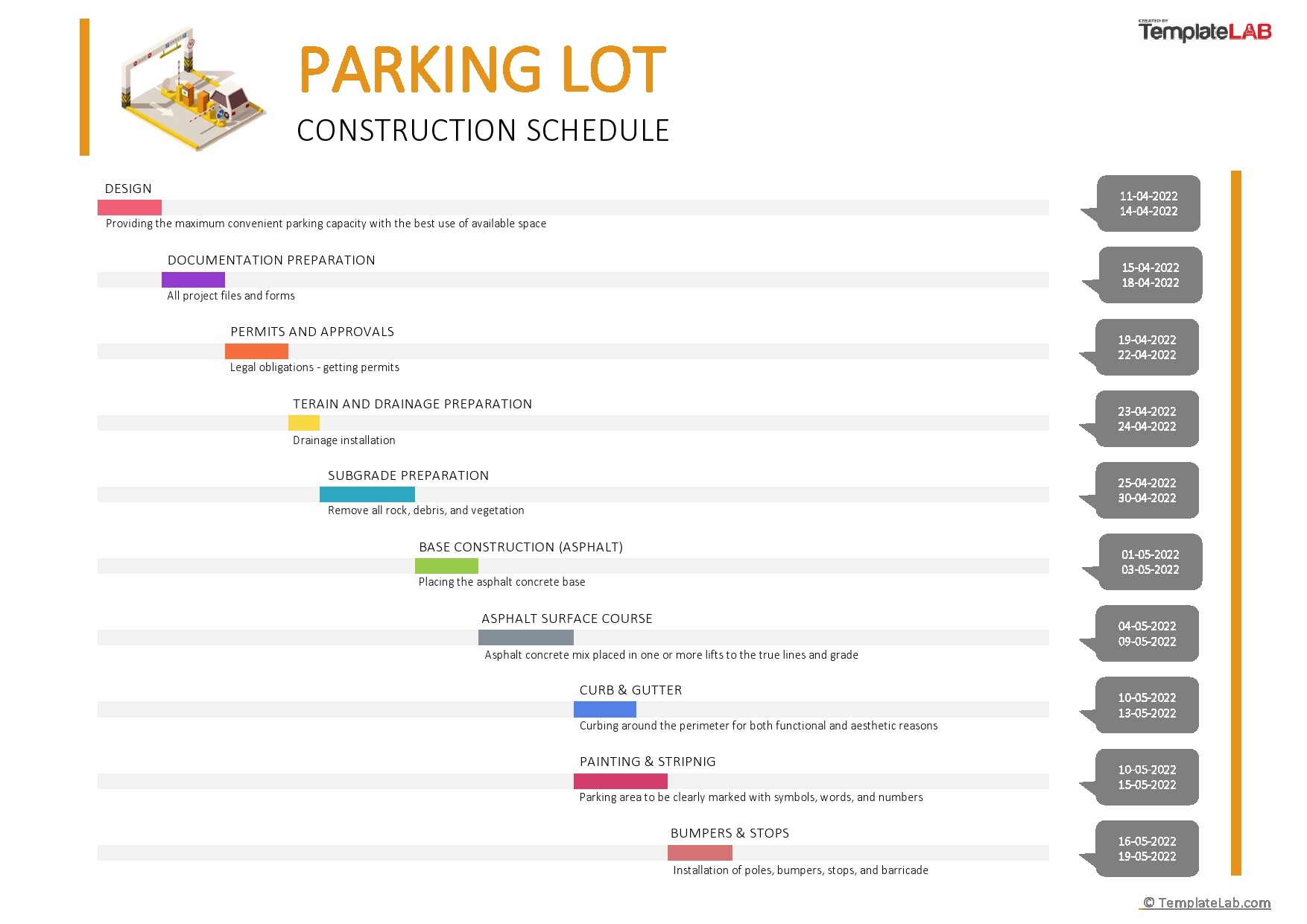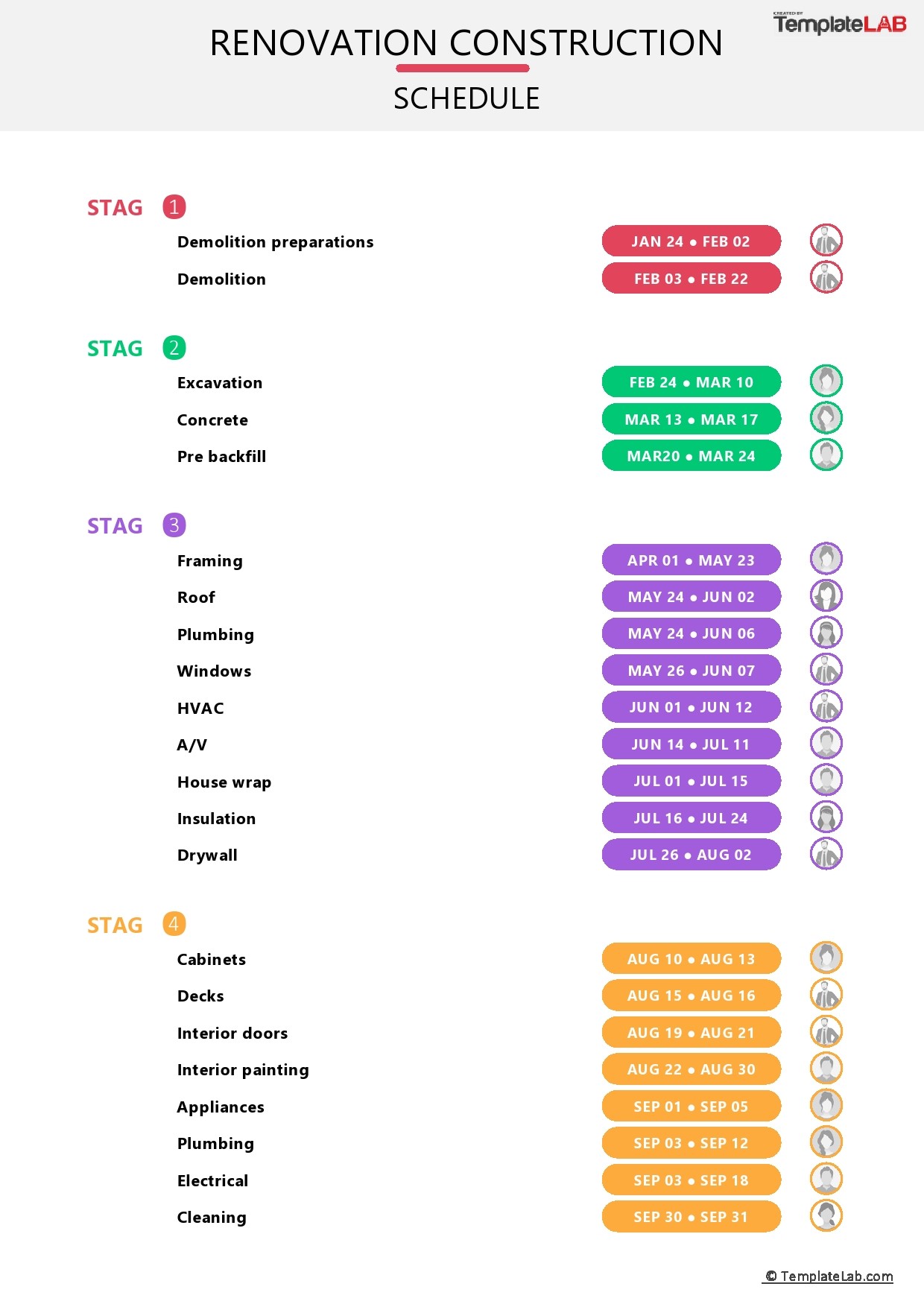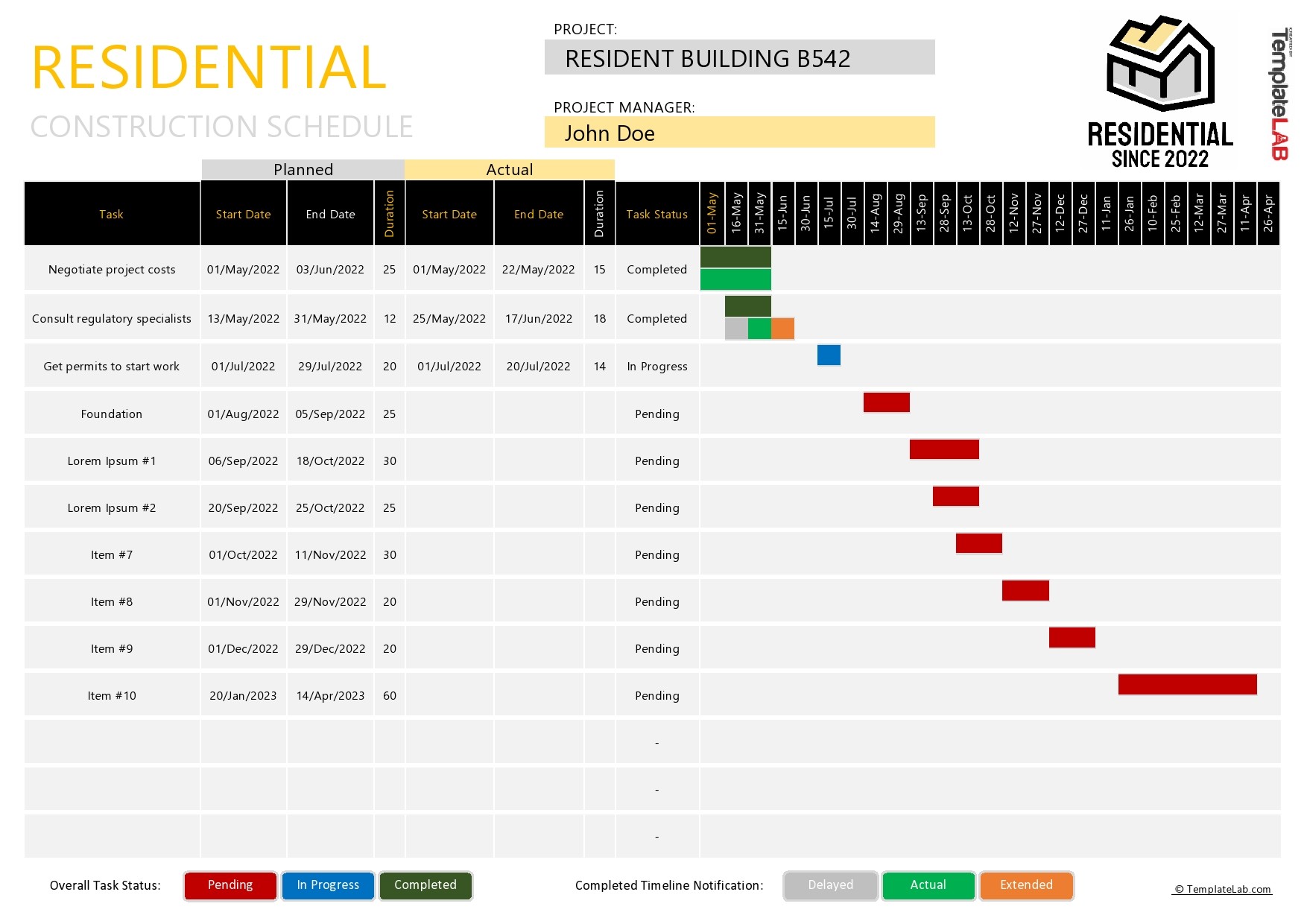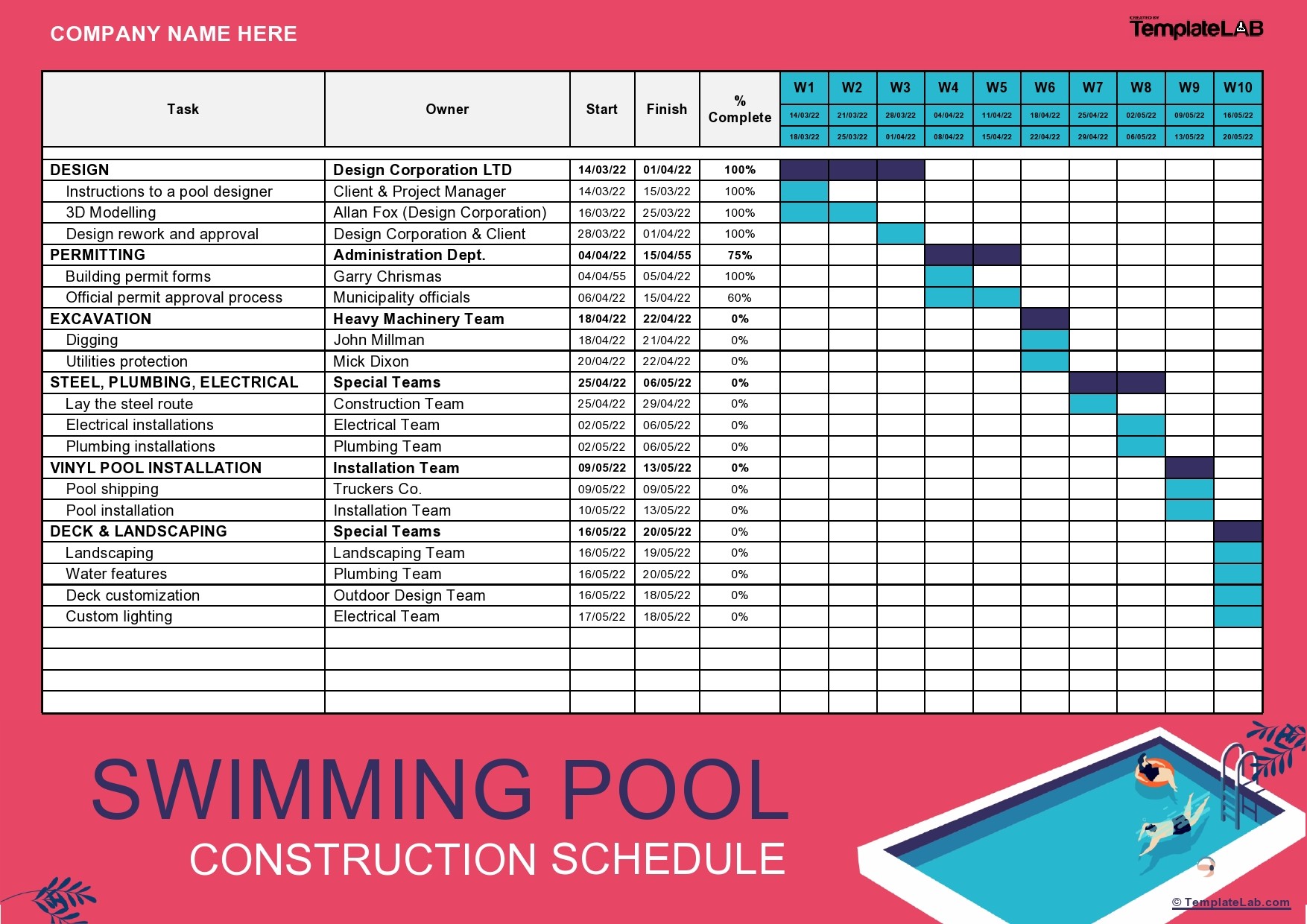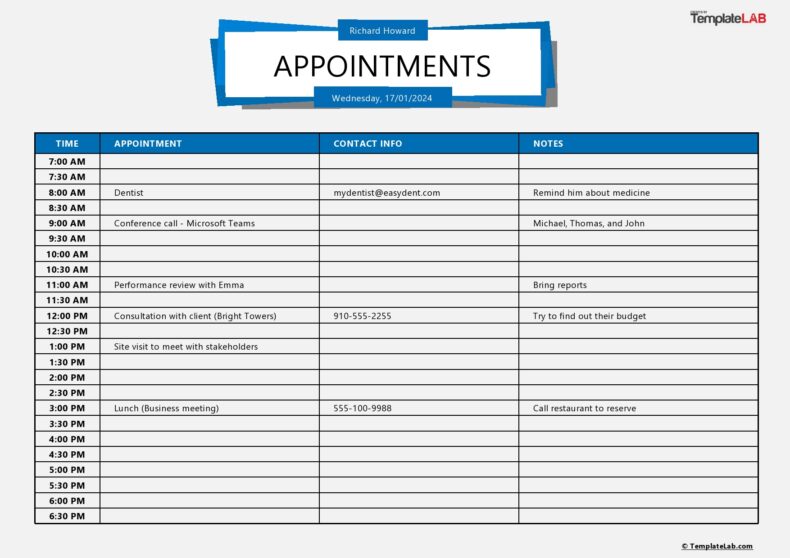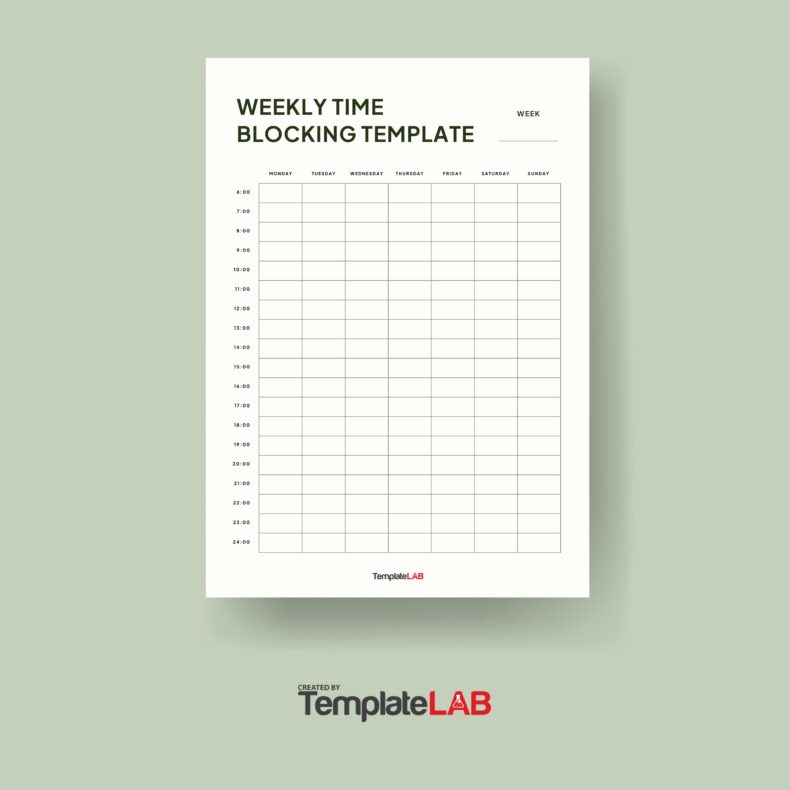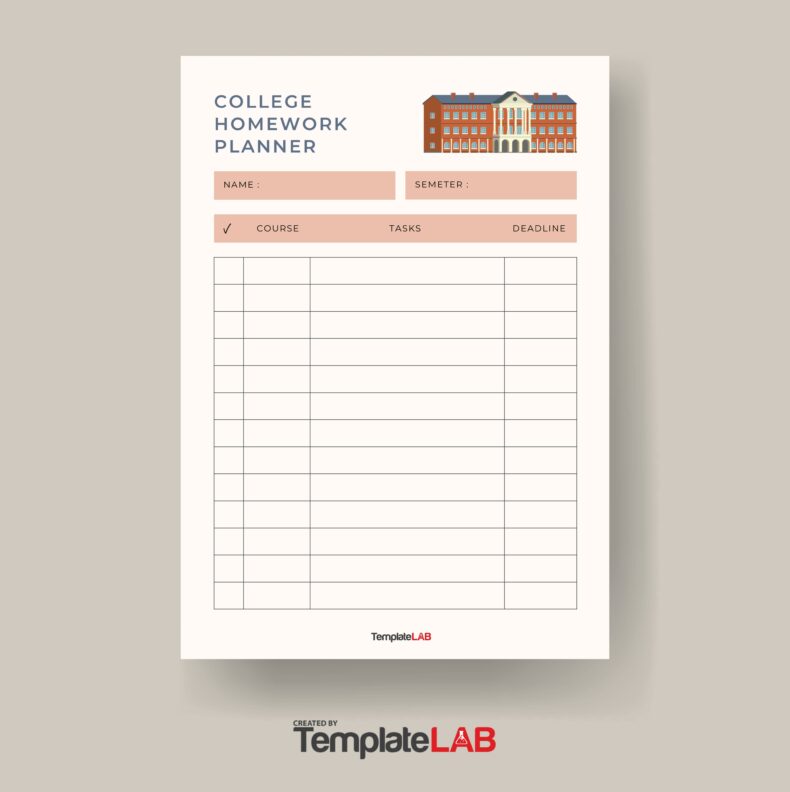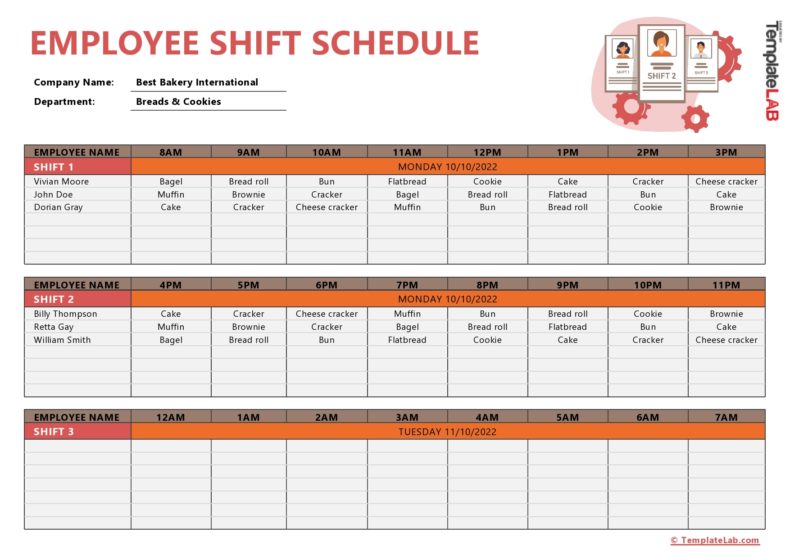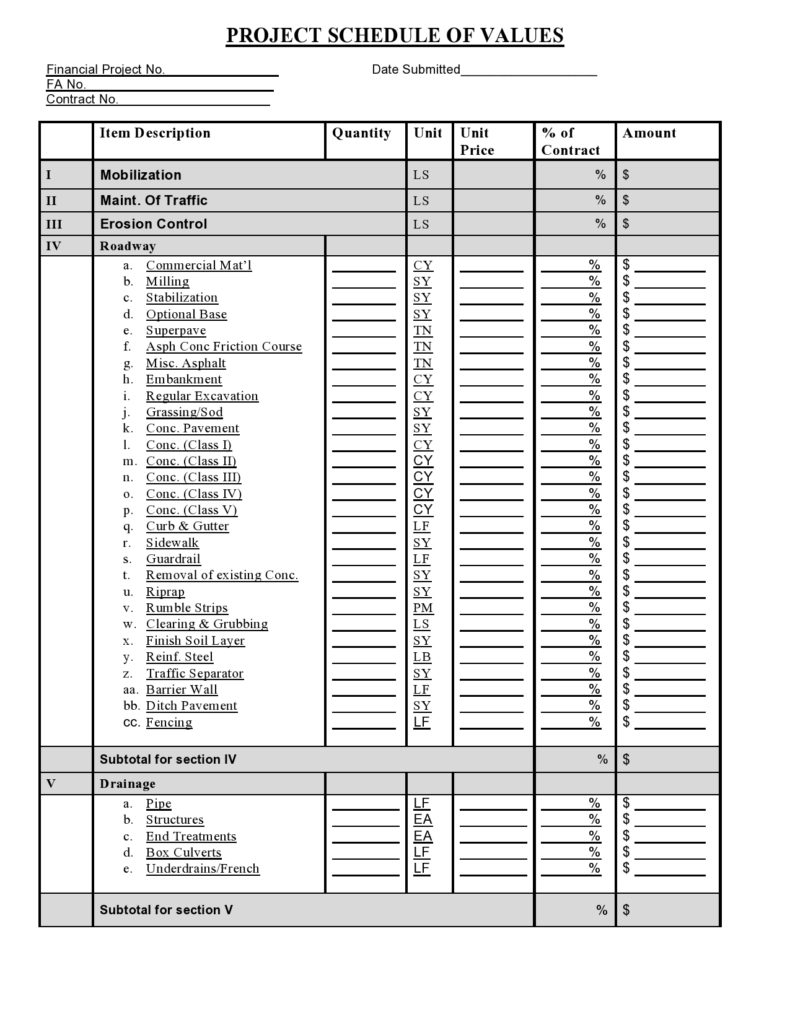When managing any project, particularly in construction, schedules are important. Project team members benefit from construction schedule templates as it allows teams to understand when and where to begin working.
Construction templates provide a comprehensive picture of all the tasks involved in a labor and construction project.
Table of Contents
- 1 Construction Schedule Templates
- 2 What is a Construction Schedule?
- 3 Construction Draw Schedule
- 4 What are Templates for Construction Schedules?
- 5 Why are Construction Schedule Templates Important?
- 6 Residential Construction Schedule
- 7 Five Types of Construction Schedule Templates
- 8 Five Tips for Creating the Best Free Construction Schedule Templates
- 9 Benefits of Using Free Templates for Construction Projects
- 10 Conclusion
Templates help to break down a project’s fundamental phases, including proposals, designs, permits, contracts, inspections, and more. It also points to where they will be working next and whether the project is on track to finish by the deadline.
Construction Schedule Templates
What is a Construction Schedule?
A construction schedule is a timeline with the resources needed to fulfill each task or milestone in a construction contract. Building projects sometimes require many schedules, each of which charts the milestones of various departments due to the numerous moving pieces involved.
Every project includes a building schedule that details the physical work that must be done, such as excavation, electrical installation, and inspections, during the project.
However, there are also payment, paperwork submission, and labor timetables for building projects. Each contractor on the project likely also has a timeline that depicts the timing of their earnings and outlays during the project, kind of like a cash flow prediction.
Projects are bound to stall unless there is an overall project timetable. Contractors who “go with the flow” often discover their project schedule slips too late and may be unsure how to make up the time.
Beginning a project with well-planned timetables can benefit contractors in the following ways:
- Identify and create solutions for project delays and constraints before the project starts.
- Determine their manpower requirements in advance.
- Recognize the tasks that need to be completed by the deadline.
- Establish cash flow requirements and make a payment plan.
Construction Draw Schedule
What are Templates for Construction Schedules?
A construction template is a pre-made document that’s already in spreadsheet format. These templates are created using simple programs like Excel, Google Sheets, and Microsoft Word and are intended to save your team time.
Construction schedule templates outline the “how” and “why” of a construction project. They provide the project management with a framework to keep the project on schedule and within the budget. It also includes a timeline for the entire project.
Since the schedule is a living construction management document affected by time, cost, and scope, it may change as the work progresses. One of the critical documents in any residential or commercial construction project is the construction schedule, which is a component of the entire construction plan.
You can keep track of the following essential components of a building schedule with your construction scheduling template:
- Tasks: Brief assignments that the team completes to produce the final delivery. Using a scheduling template, you can select task duration, start and finish dates, and designate task owners.
- Dependencies: These are tasks that must be completed before another can be started or stopped
- Deadlines: Indicate how long a task will take by specifying when it must be finished.
- Deliverables: This includes the products of the project’s tasks and building phases.
- Resource management: Organizing people, machinery, supplies, and other resources used to carry out a building project.
- Allocation of Assets: resource allocation reduces the risk of the project running out of resources or not having enough to begin with.
- Milestones: Events in your construction project that signal the conclusion of a certain phase or the distribution of key deliverables.
- Critical Path: The entire construction timeline will need to be modified if things are delayed.
- Project Costs: You can monitor the expenses of carrying out each action in your building plan using your template.
Why are Construction Schedule Templates Important?
Because there is so much data to gather, arrange, and keep track of during the construction scheduling process, a construction schedule template is extremely helpful. It gives your project timetable structure so you can concentrate on delegating duties and working with your team.
The construction schedule template divides your project into phases, which may then be further broken down into subtasks. This is to help you organize all the construction scheduling information and make it easier to manage.
Using this construction scheduling template, you can accomplish the following things:
- Establish start and finish times for every project task.
- Recognize project task dependencies and link-related tasks.
- Determine the critical path and important tasks.
- Select your preferred list of calendar, Gantt, and Kanban options.
- View a list of project activities in a column marked by the work breakdown structure (WBS).
- You can alter the formatting of the Gantt, Kanban, or calendar to suit your needs.
- Create milestones, give team members tasks to complete, color-code assignments, and more.
- Construction Gantt chart templates, Kanban boards, and online calendars allow teams to collaborate in real time.
- Assign tasks, exchange files, and interact with the group.
Finishing your construction project on schedule and under budget is now possible as the formerly intimidating construction scheduling process begins to take shape.
Residential Construction Schedule
Five Types of Construction Schedule Templates
There are five main types of construction schedule templates, each with its distinct uses. These include the following:
- Critical Path Method or CPM
This method is most widely used in construction scheduling for large projects and is the legal standard for measuring project delays and disputes.
The time and resources needed to accomplish each activity are calculated using CPM, which creates a graphical representation of the project. It also helps construction managers to identify crucial tasks that must be executed immediately for the project to be finished on schedule. - Program Evaluation and Review Method or PERT
This method is the most visually accessible construction scheduling tool out of all the methods. It visually depicts the major project activities and the order in which the construction team must complete them.
Each of these actions entails the expenditure of either time, resources, or both. Consider it a roadmap for project managers to reach project completion. The building won’t be finished until all of the checkpoints have been accomplished.
These charts are often constructed from back to front. This is because, for many projects, the end date is fixed, and the contractor is more flexible. - Line of Balance or LOB Method
Teams working on recurring projects, like roads or tunnels, can schedule their resources using the line of balance (LOB) scheduling, allowing the work to advance. These projects include ongoing activities that call for the same staff or the same equipment.
It is based on careful project planning carried out over numerous iterations. This management control technique incorporates blocks of repetitive work activities, such as highways, pipelines, tunnels, trains, and high-rise buildings. LOB gathers, evaluates, and provides data on cost, time, and completion and compares it to a predetermined plan.
By identifying the precise moments at which deviations take place and the subsequent knock-on or secondary impacts that come from them, LOB assists in identifying where projects veer off course. - Q Schedule Method
This method of scheduling construction work, also known as quantitative scheduling or queue scheduling, uses a bar chart format to indicate the number of materials that will be used at each step of the project.
This kind of scheduling enables businesses to identify the amount and type of material that will be needed at various times and physical locations.
It also incorporates a hierarchical component, allowing managers and employees to see the resources they need and when they need them. This helps to order them appropriately, follow tasks in order, and avoid interfering with others’ work—all while keeping tabs on expenses. - Resource-Oriented Method
This approach to construction scheduling prioritizes the most efficient use of the project’s resources. As many teams compete for scarce resources, delays are more likely to happen.
The resource-oriented schedule accounts for everyone who will require the resources in advance and then assigns their utilization in a systematic way throughout the project’s duration.
This could refer to resources like limited space, expensive equipment, labor, project finances, or anything else that project teams find particularly valuable.
Five Tips for Creating the Best Free Construction Schedule Templates
Let’s be honest; a construction project schedule is only functional if it serves some purpose. There is no magic formula for a construction schedule that works; the key is making sure that the people who need it get it.
Here is a list of steps to take to ensure the perfect free construction scheduling template:
- First, compile a list of all the steps that are necessary to finish the project.
Whatever kind of plan you’re putting together, there will always be a set number of tasks you have to finish to get the job done. Try to be as specific as you can when putting this list together. - Prioritize and organize tasks.
A construction project plan has to be done in a certain order. Some tasks are so important to the overall plan that if they’re skipped or done in the wrong order, it will cause all of the following steps to be delayed.
Before the foundation can be poured, excavation must take place. It might be necessary to send out a conditional waiver before the payment is made.
Make sure to put the actions in a logical and appropriate order. This way you can track progress on project milestones and assign team members tasks. - Disclose obligations and available resources.
Each activity should have a leader, and the schedule should be distributed to all accountable parties for two reasons:
The accountable party must understand what to do and when to do it, and
If there is an issue or delay in the construction phase, others may need to get in touch with those responsible to iron out any discrepancies.
You can also list the resources required to do each activity. For instance, heavy machinery might be shared among projects. Each project’s project manager should know when equipment needs to move from one job to the next. - Create a realistic timetable.
Add the time that each activity on the schedule will need. Durations may vary, and certain scheduling tools may provide adaptable timetables that consider changes during the project.
Others, like a timeline for progress payments, are typically predetermined in advance. The date payments are due each month will show in the contract, allowing you to plan out the full project’s payment schedule in advance. - Disclose the timetable.
The same schedule should be followed by everyone so that they’re all on the same page. This eliminates risk and ensures a smooth construction schedule.
Benefits of Using Free Templates for Construction Projects
Before a project begins, contractors can plan for the demand for labor, supplies, and cash flow by creating their project timeline.
They can detect delays earlier by routinely monitoring and revising that timetable, which enables them to prepare strategies to lessen the impact on their cash flow. Planning is usually simpler than responding when a problem occurs.
With an easy-to-use free template, you can schedule your residential construction project, connect teams, collect real-time data, and work more productively.
Main Benefits
- Set the task’s priority and other details: You can assign dependent tasks using the Gantt chart and set the priority, tags, descriptions, and attachments.
- Avoid delays: By using a template, you can link dependent jobs together to prevent bottlenecks. While you may add milestones to the template, you can also set up email alerts and notifications to remind you of approaching deadlines and ensure that you never miss one.
- Locate the Critical Path: A construction Gantt chart template view offers greater functionality than most project management programs. You can save time and difficult calculations by having it filter the crucial path for you. Establish a baseline once your construction program has been completed to identify problems sooner and stay on track and within your budget.
- View Real-Time Data: With a residential construction schedule template, you can gather real-time data and show it on dashboards that compute project tasks metrics and displays them in simple-to-read graphs and charts.
Conclusion
Having your own construction schedule template can assist in arranging and concluding all your building projects.
Use it to organize your tasks, teams, and projects and detect delays earlier by monitoring and revising your template. This will allow you to prepare strategies to lessen the impact on your cash flow and your overall business performance.

